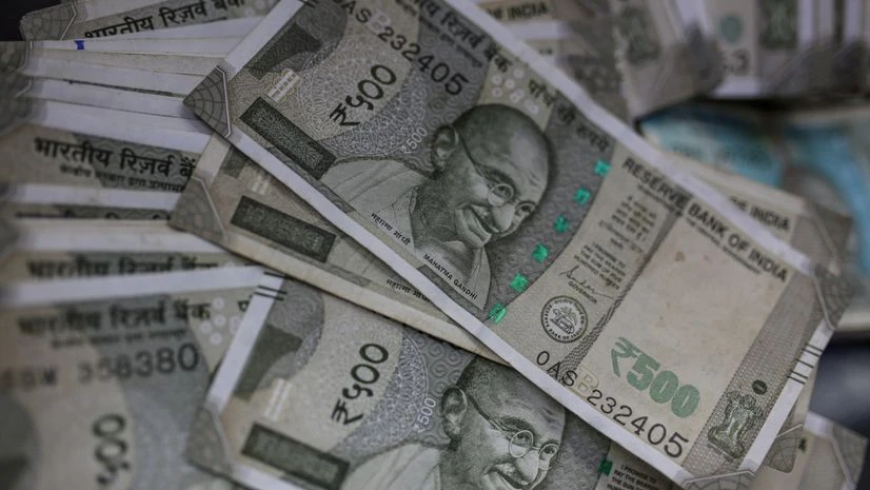Financing Resilience: India’s Three-Pronged Strategy to Counter Global Economic Turbulence
India launches a multi-pronged economic strategy focussed on enhancing capex, trade competitiveness, and FDI to buffer against global economic headwinds, while maintaining macro stability.

As global trade tensions and volatile capital flows test economic stability worldwide, India’s Finance Ministry has doubled down on a multi-pronged policy approach. A recent statement in Parliament by Minister of State for Finance Pankaj Chaudhary highlighted a three-fold strategy: boost public capital expenditure (capex), enhance trade competitiveness, and attract foreign direct investment (FDI). This carefully calibrated response aims to shield the Indian economy from external disruptions—markedly setting the stage for sustainable growth. Here’s a comprehensive breakdown of the plan and its implications.
1. Public Capex: Laying the Bedrock for Growth
At the heart of this strategy is a renewed emphasis on public capex—a long-standing lever in the government’s fiscal toolkit. The goal is to channel substantial capital into infrastructure: roads, ports, rail networks, urban utilities, energy systems, and social infrastructure.
FY 2025–26 has been earmarked for a capex outlay of over ₹16 lakh crore, representing a 10.2% year-on-year increase in real terms, according to the mid-year budget review (PIB Mumbai). Beyond construction, capex investments support R&D, STEM education, and rural connectivity—addressing structural bottlenecks that have historically limited job creation and economic participation.
This approach not only drives short-term employment and liquidity but also reinforces India’s long-term manufacturing ambitions by creating integrated, reliable infrastructure systems (PIB Mumbai).
2. Trade Competitiveness: Diversify and Deepen Market Access
India’s strategy goes beyond domestic output; the focus also encompasses enhanced trade competitiveness. Minister Chaudhary stressed the importance of negotiating new trade deals, streamlining compliance, and integrating better with global value chains (ET #cite_turn0search1).
Prime Minister Modi earlier stated that India is actively diversifying export markets to mitigate dependence on any single region—a clear strategy to navigate global headwinds (the Economic Times on finance reform). This includes exploring partnerships with Southeast Asia, Africa, Latin America, and strengthening ties with advanced economies like the U.S. and EU.
Lowering tariffs on intermediate goods, as recommended by the International Monetary Fund, will also play a crucial role; the IMF urged India to ease import restrictions and relax FDI regulations to balance its external sector (ET scoop on IMF). Going forward, India could benefit from a more flexible import regime—particularly for manufacturing inputs—without compromising domestic employment.
3. Attracting FDI: Policy Liberalisation and Institutional Reforms
Global uncertainty across equity markets has made FDI attraction a central pillar of India’s multi-pronged approach. The budget of 2024 had initiated bold reforms—raising FDI limits (insurance up to 100%), removing Angel Tax for startups, and introducing reforms to expedite industry approvals (Asia Pacific Centre).
Further, authorities are exploring mezzanine financing and blended capital instruments to make investments more appealing—especially across sectors like infrastructure, defence, telecom, and critical mining (Reuters 2024 on FDI tools). Coupled with the proposed new Income Tax Act, Simplified EODB reforms, and infrastructure funds like the Maritime Development Fund, these measures are designed to boost institutional and sovereign investments (ET budget update, PIB Mumbai).
4. Macroeconomic Anchors: Inflation, Fiscal Discipline, Capital Resilience
The multi-pronged plan is further enhanced by strong macroeconomic fundamentals:
-
Inflation remains contained, offering room for RBI to remain accommodative.
-
Fiscal deficit is capped at 4.4% of GDP for FY26, with no intent to revise this target (ET #cite_turn0search1).
-
Robust foreign exchange reserves and a sound banking sector provide stability.
-
Digital infrastructure and financial integration, including initiatives like the GST e-invoice and UPI, contribute to better compliance and capital mobilization.
This macro resilience allows fiscal and monetary space to support growth—even as global headwinds persist.
5. Measuring Impact: Early Signs & Future Ahead
Positive Indicators So Far:
-
RBI economic activity reports show a recovery in private capex and manufacturing PMI turning expansionary.
-
Export trends have improved slightly after dips in late 2024, especially in services and technology.
-
FDI inflows, although currently moderate, show uptick in key sectors like data centers and electric vehicles.
Watchpoints Ahead:
-
Realisation of trade deals: Formalising agreements with the U.K., EU, and Australia could significantly broaden market access.
-
Capex execution efficiency: Admin delays must be avoided for speedy delivery of infrastructure projects.
-
FDI liberalisation balance: Ensuring foreign capital flows without stifling domestic enterprise or triggering currency instability.
-
Monsoon and global commodity trends: External factors will influence inflation and policy tone.
6. Expert Opinions & Global Validation
Economists at IMF and OECD have welcomed India’s coordinated strategy—calling it a prudent blend of investment, reforms, and external resilience. The IMF’s advice to relax import curbs and FDI barriers aligns directly with the government’s roadmap (IMF recommendations).
Furthermore, analysts at PHDCCI and CII describe India’s approach as “multi-dimensional”, highlighting its balanced focus on investment, exports, and reforms (CII press sentiment).
7. Risks & Counterpoints
No strategy is without danger:
-
Global slowdown in Europe or U.S. demand could undermine export growth.
-
Persistent inflationary pressures from energy or food supply shocks.
-
Execution risk: Delays or bureaucratic drag could dilute policy impact.
-
Market volatility: Sudden reversal of global liquidity could interfere with policy levers.
Therefore, continuous monitoring and adaptability are essential.
Conclusion: A Triumph of Strategic Policy Coordination
India’s renewed multi-pronged economic approach underscores not crisis reaction but proactive resilience. By simultaneously strengthening infrastructure, trade competitiveness, and domestic investment frameworks, its resilience to external shocks is enhanced. The synergy between capex, FDI, and trade reform offers a robust model for sustained, inclusive growth.
As global challenges—trade wars, central bank tightening, supply chain disruptions—continue to play out, India’s approach could emerge as a model for other emerging markets. The key to success lies in seamless execution, consistent reforms, and staying ahead through responsive governance.




















































